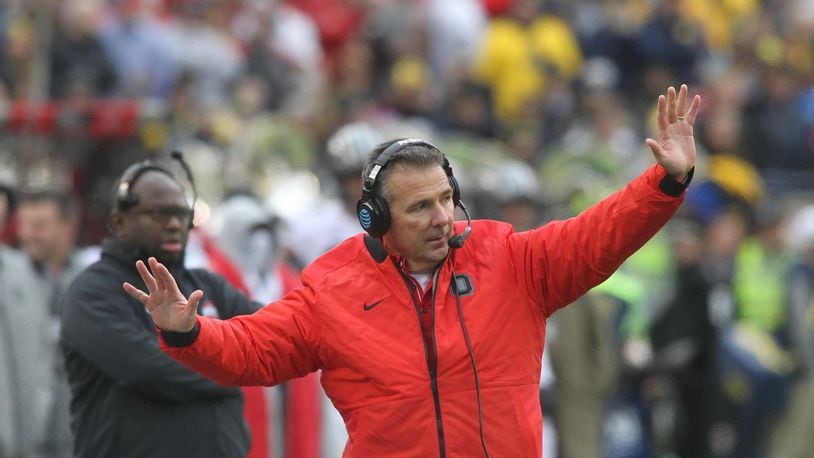Early indications are it will not be Meyer, at least not Saturday afternoon when the fourth-ranked Buckeyes play host to Tulane at 3:30 at Ohio Stadium.
He said earlier this week he will leave the play-calling to offensive coordinators Ryan Day and Kevin Wilson, who guided one of the nation’s best attacks during Meyer’s three-game suspension for mismanaging the employment of former receivers coach Zach Smith.
“I think I’ll be involved more as a game manager at this point,” Meyer said this week on the Big Ten coaches teleconference.
That means his focus will be when to go for it on fourth down, which penalties to accept, etc. while Day and Wilson decide if they would rather score on the Green Wave by land or by air.
Their results so far are impressive: Not only are the Buckeyes 3-0 on the season, they have the No. 2 scoring offense (56.3 points per game) and are No. 3 in total yards (608.7 per game).
Any change has the potential to go from molehill to mountain in the hyper-scrutinized world of major-college football, but this move is more notable because Meyer came to Ohio State in 2012 with a reputation as an offensive guru.
His power spread offense shredded opponents at Bowling Green, Utah and Florida before setting up Wayne High School grad Braxton Miller to become a two-time winner of the Chicago Tribune Silver Football as the Big Ten’s most valuable player.
Ohio State ran the ball roughly 60 percent of the time (after accounting for sacks) in Meyer’s first four years in Columbus, but tried to be more balanced over the past two seasons.
The Buckeyes succeeded in that goal, running only about 54 percent of the time in 2016 and ‘17, but that did not solve the offense’s tendency to bog down in big games.
This season the run/pass ratio is again 54/46, but the way the Buckeyes have run the ball is notably different.
While Ohio State quarterbacks averaged 14 runs per game from 2012-17, that number is down to 4.67 this season with drop-back passer Dwayne Haskins replacing dual-threat J.T. Barrett at that position (plus a handful of possessions for backup Tate Martell, who has nine carries in two games).
Running backs J.K. Dobbins and Mike Weber were expected to get more of the rushing load since Barrett’s eligibility expired after the Cotton Bowl last season, but questions about just how much the quarterback runs would be reduced remained throughout the offseason given Meyer’s history.
That, of course, made questions about the changes persisting upon his return only natural.
“I’ve done that before in the past,” he said of becoming more of a game manager,”help where I need to help, but I think a high degree of (the decision) was the performance of the offense and how well it worked together and obviously the success we’ve had.”
So far, Haskins is running for about 30 fewer yards per game than Barrett did last season, but he is throwing for almost 80 more.
“Throwing very accurate,” Meyer said. “Receivers are playing fairly well and he’s got two good backs behind him. It’s a little different style offense (despite) a lot of the same concepts, but I always call that, that’s that lost yardage you have to pick up elsewhere and he certainly has up to this point.”
SATURDAY’S GAME
Tulane at Ohio State, 3:30 p.m., Big Ten Network, 1410
About the Author
